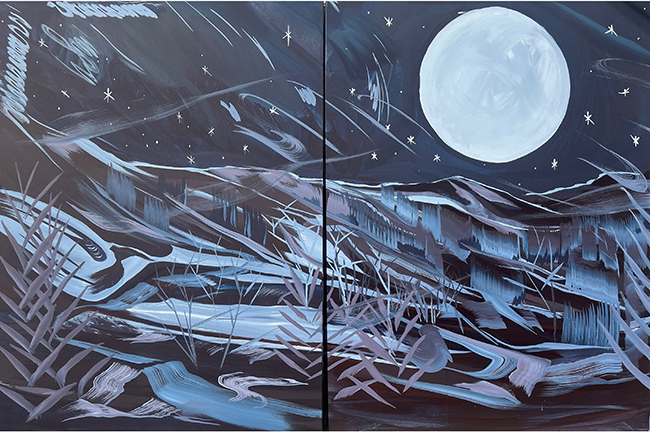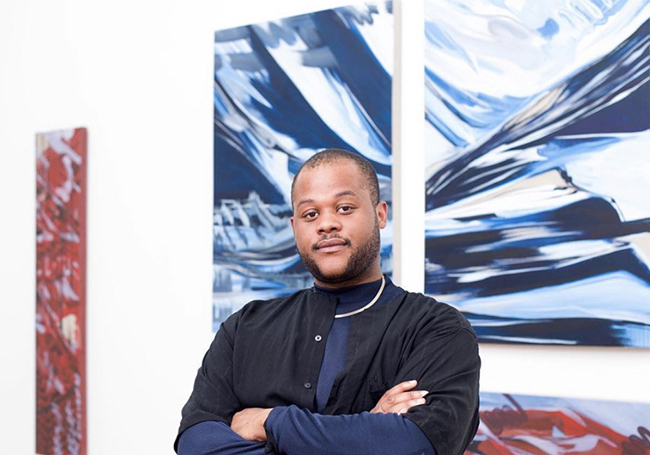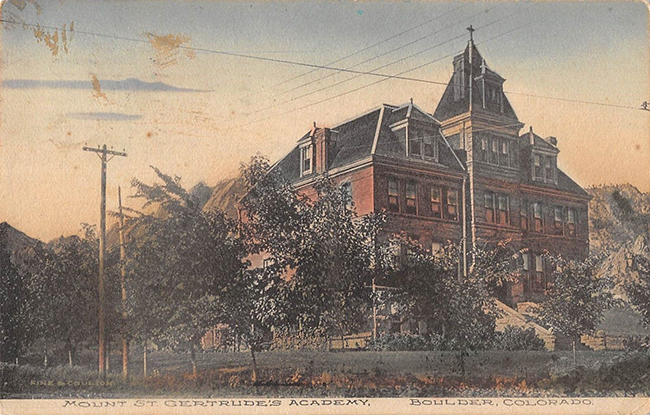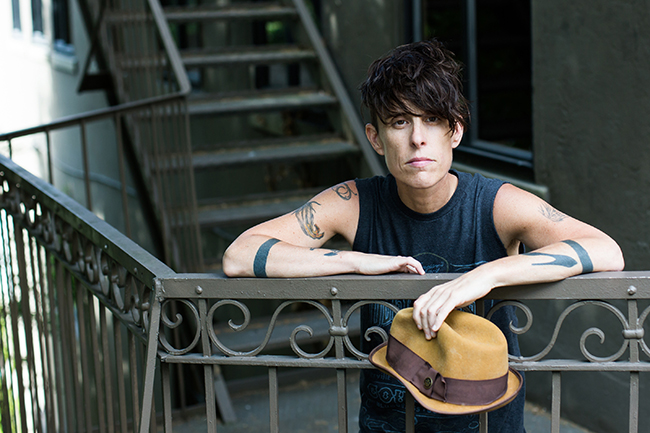Peaks and Valleys
04 Dec 2023
Denver painter’s luminous landscapes offer pastoral calm and a message about climate change
By Kalene McCort

For Denver-based creative Alexander Richard Wilson, artistic ability surfaced at an exceptionally early age.
“I really think I woke up gluing things together; I came to consciousness with markers stabbing the kitchen wall,” Wilson recalls.
In kindergarten, an art teacher was marveled by Wilson’s raw skill to draw in perspective after a class prompt. Wilson—who studied Architecture and Designed Objects at the School of the Art Institute of Chicago—would also construct entire complex, paper cities as a child.
Now, the 30-year-old puts in countless hours at a paint-splattered studio located within The Temple on Curtis Street in Denver’s Five Points. The creative hub—once the first major synagogue in Denver, built in 1882—is now home to some of the city’s most revered makers.
“The people around me and the events as they happen on earth inspire me,” Wilson says. “Being alive is inspirational—if you sit with it—a lot has to come together for this to go every day.”
Wilson’s vibrant work is rich with time and place, but it also captures a feeling that’s rather timeless, too.
Cows in grassy fields, burnt tangerine sunsets, flocks of crows among skyscrapers, snow-capped mountains of former mining towns and stirring portraiture have all been splashed upon canvas, with much passion and intent.
Prior to relocating to Colorado from Chicago, Wilson was a studio assistant to prominent wire sculptor Eric Gushee. At the time, Wilson’s visual art was more intrinsically abstract, which is what the artist describes as pieces possessing “movement and rhythm.”
Since moving to Colorado in 2020, the peaks and valleys of the Rocky Mountain region have acted as Wilson’s muse, which, following road trips to overlooked and forgotten places in the Rockies, have manifested on canvas.
A scenic drive to Colorado’s alpine valley resulted in a painting of the Conestoga wagon marquee of The Frontier Drive-Inn in the town of Center. Once a place to pull in and view cinematic gems, it now bears the message “Glamp with Us.” On Instagram, Wilson calls the mid-century landmark an “idol of colonialism.”
Wilson’s work displays the evolution of places, cities and towns that may have been considered top-notch but are now eroded, both literally and figuratively. Themes of gentrification and decay dance alongside an essence of pastoral calm.
Climate change remains at the forefront of Wilson’s work, and it often intersects with the subjects of race and injustice. “I—in the Black body way—felt like Colorado’s landscape was very relatable: no one’s talking about you being on fire,” Wilson says.
“Sometimes I feel that I am specifically talking about our idea of beauty and our ideas of tolerance relative to imaging and landscape.” Wilson’s “Stars at night, full moon in Virgo, winds sweeping,” for example, is a stunning four-panel painting of lush blue depicting the San Luis Mountains basked in the glow of the moon.
At other times, Wilson’s brushstrokes give way to very specific homages.

In Wilson’s painting, “Mike Brown as photographed after his Graduation from Normandy High School,” Wilson honors the 18-year-old African American man who lost his life at the hands of Missouri Law Enforcement, in Ferguson, in 2014. Wilson grew up in nearby Florissant, a suburb of St. Louis.
Wilson’s journey into becoming a full-fledged working artist was inspired by the global pandemic, an event that had many reevaluating.
“Tragedy and happiness are the things that change your life,” Wilson says. “I will say, like most people, I think for me in the last five years, it’s COVID-19, which canceled everything. It was an insane kind of period from my brain.”
Wilson mostly works from photographs and enjoys occasionally painting en plein air but relishes amping up color back at the studio.
“The most rewarding aspect about being an artist is when people get it, when kids get it,” Wilson says. “I want viewers to feel like they are being acknowledged in the work.”
Wilson stays busy crafting commissions and selling paintings on Instagram. The layered work— tinged with elements of folk art and sophistication—remains in demand by collectors throughout the U.S.
“A lot of the people who do find me find me for a really good reason, and it feels really genuine and uncomplicated,” Wilson says. “I love the people who support me.”
Pieces by Wilson can be seen in the Birmingham Museum of Art, works that were purchased by a man over social media without Wilson knowing they would be displayed as part
of a collection.
“My goals for the year are to keep working relative to my lens of activism and to keep telling this funny Colorado story because I feel like it’s the beginning of an opus, but sometimes it feels like I’m writing a whole book while making these,” Wilson says. “Colorado still has a lot of mysteries, a lot of things that are growing inside it that are good.”












